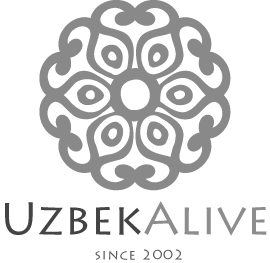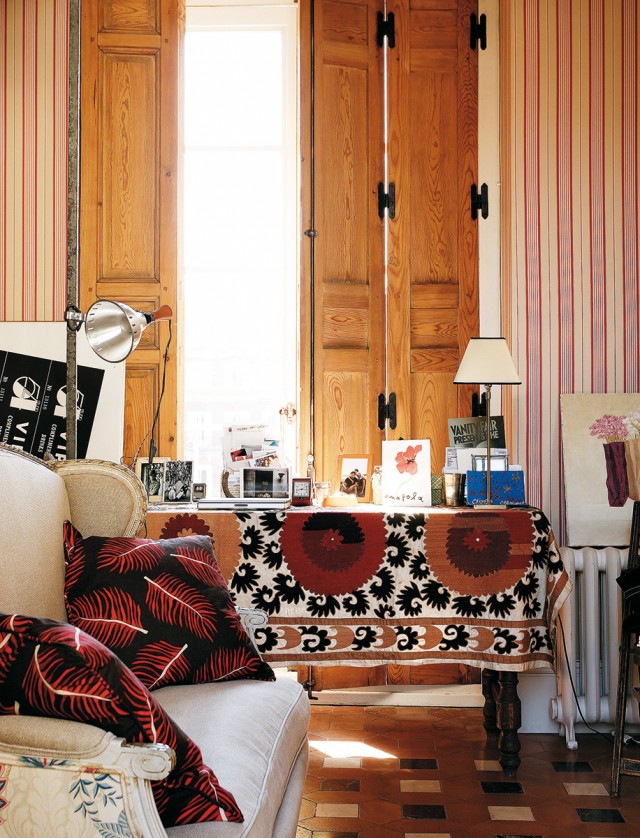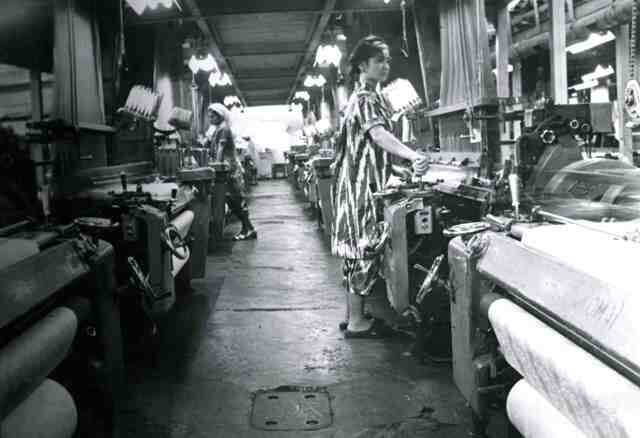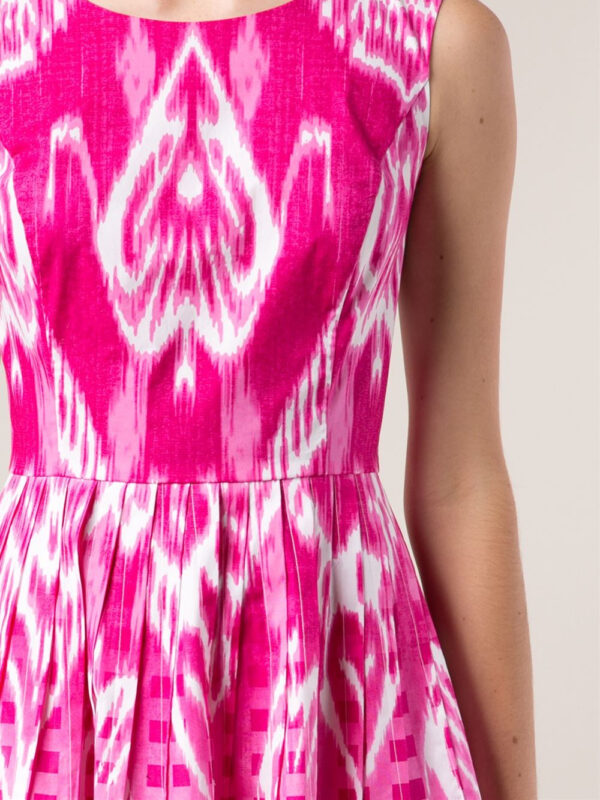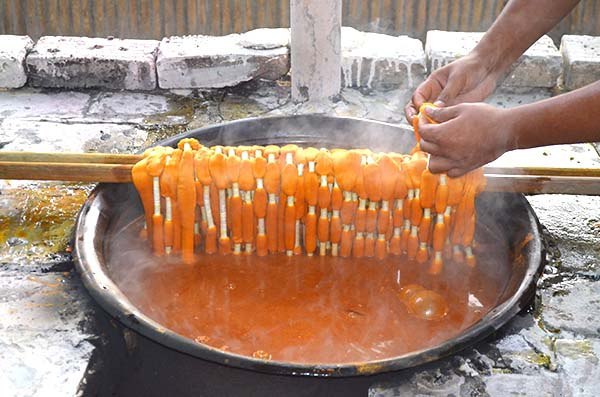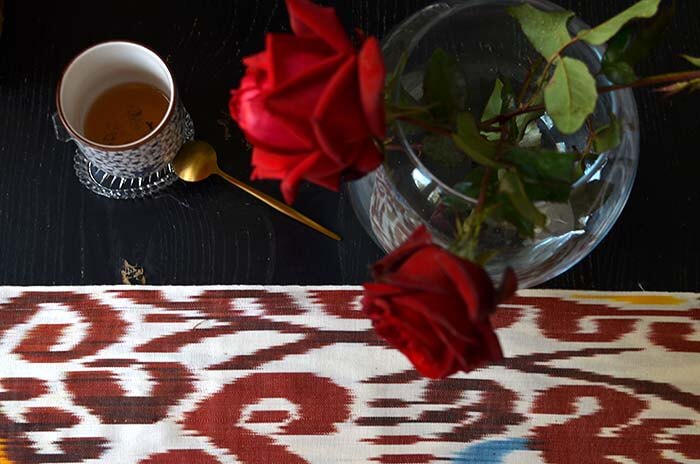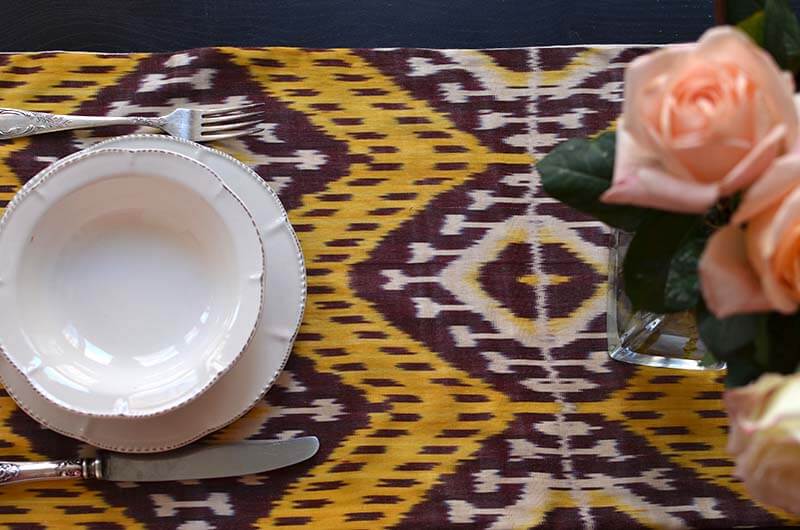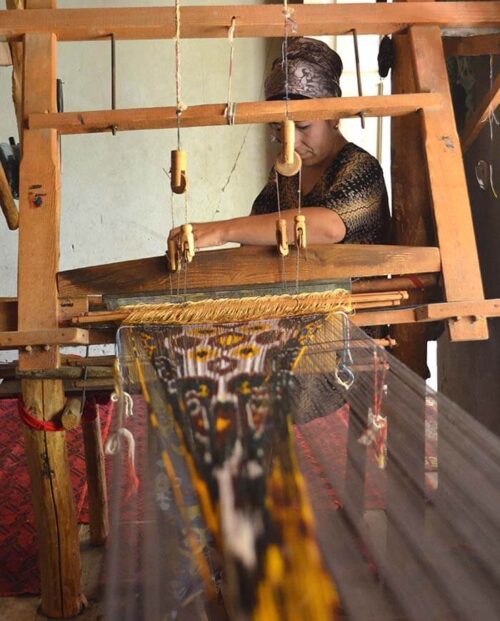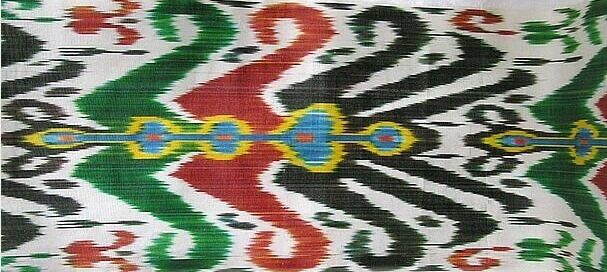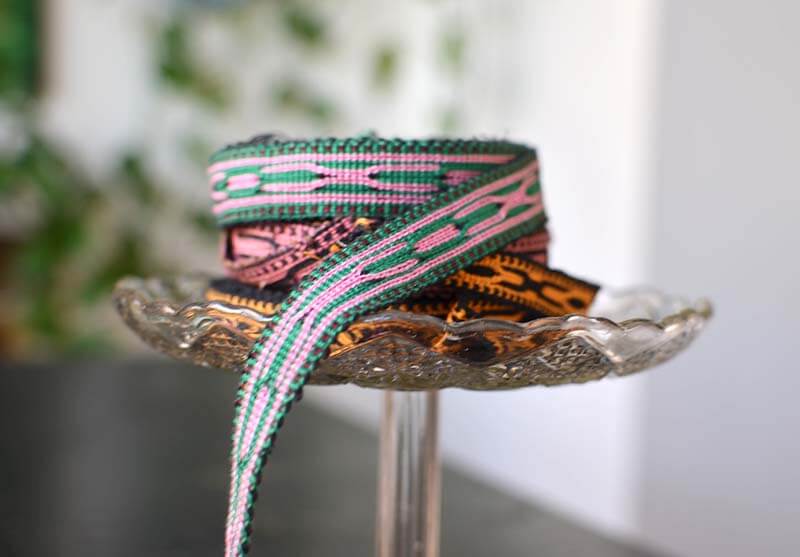Suzani embroidery: history and present days
I’m reading an amazing book “Silk and cotton: Textiles from the Central Asia that was“ by Susan Meller. My main interest in this book was ikat fabric patterns and antique Ikat ropes. However, the book covers so many areas of Central Asian textiles! There is a whole chapter in the book about Central Asian suzani embroidery.
UzbekAlive's main focus is on ikats but I still wanted to write a short blog post about suzanis to give you some history behind these beautiful embroidered textiles. History creates a background behind a specific product. This way when you buy a little something with a history you end up acquiring knowledge and a piece of cultural heritage.
Why are modern day Uzbek ikat fabrics narrow?
Today's topic is the narrow width of Uzbek ikats fabrics. Many of you ask us why Uzbek ikat fabrics are so narrow. With this post I will try to explain why.
Ikat fabrics and arrival of communism
Ikat weaving has been practiced in Central Asia for centuries by artisans. The arrival of bolsheviks with an idea of communism about 100 years ago put an end to individual craftsmanship and made all manufacturing, including ikat making a government domain. Only state owned textile companies made ikats. Attempts to make ikats at home as a side business was a crime for which artisans could go to a jail. This sounds wild but the Soviet idea was to have everyone economically equal. When someone works secretly at home, in addition to working for a state textile factory, he/she gets richer than others. That was unacceptable to the Soviet regime. The fact that ikat weaving has survived is partly due to these "crimes" committed by artisans by working in secret.
Hot pink ikat fabric and grande Oscar de La Renta
We have something in common with great Oscar de la Renta. It’s not only love for Uzbek ikat fabrics. It is specifically love for hot pink and white ikat fabric.
Take a look at this summer dress from Oscar de la Renta’s Resort 2015 collection. This is a dress made of a Ikat pattern fabric combined with a gingham pattern. I don’t know if the fabric is a handmade ikat fabric. From the description of the dress at www.matchesfashion.com this dress is Ikat and gingham print versus being a real ikat fabric. You can read more about a difference between ikat fabrics and ikat print fabrics following this link.
What is a difference between “ikat fabrics” and “ikat print fabrics”?
We often come across fabrics defined as “Ikat print fabrics” which leaves us a bit confused. What in the world is Ikat print? How is it different from Ikat fabric? These are questions we would like to cover in this post and hopefully clarify the difference.
Let’s start with Ikat terminology. Wikipedia defines Ikat as follows:
“ikat is a dyeing technique used to pattern textiles that employs resist dyeing on the yarns prior to dyeing and weaving the fabric. In ikat the resist is formed by binding individual yarns or bundles of yarns with a tight wrapping applied in the desired pattern (ikat means "to bind" in the Indonesian language). The yarns are then dyed. The bindings may then be altered to create a new pattern and the yarns dyed again with another colour. This process may be repeated multiple times to produce elaborate, multicolored patterns. When the dyeing is finished all the bindings are removed and the yarns are woven into cloth”
As you can see the ikat making process is as follows: 1) bind, 2) dye and 3) weave.
Textures and colors of Uzbek ikat fabrics
I have noticed that sometimes the best way to answer customers' questions is by making a short video. Oftentimes it is also a good way to communicate texture and colors of Uzbek ikat fabrics..
However, when it comes to colors things can get tricky.
First of all, we all have different screen resolutions and as such, we all see colors differently.
Secondly, the colors of the fabric depend on the lighting. We try to take photos in the natural light. However, indoors with artificial lighting the colors of Ikat fabrics will be different.
Ikat table runner perfect for Thanksgiving dinners
This ikat table runner is something we have been planning to make for a long time. We finally got around to making it. The idea was to make something that will go well with a pumpkin pie, cinnamon and nutmeg theme. In other words, in choosing this ikat fabric for a table runner Thanksgiving was already on our mind.
We like to keep things natural
The same is true for this Ikat table runner. We paired handwoven Uzbek Ikat fabric with an unbleached very natural cotton fabric. The goal was to have both fabrics organic, soft and pleasant to touch.
Free shipping on orders $99!
It looks like air shipping is getting somewhat normalized. Orders are reaching Americas and Europe within a somewhat reasonable timeframe. Hallelujah!
This being said, post office workers are still reluctant to give us a timeframe within which orders will reach a specific country. This is understandable because each country is handling its Covid-19 situation differently. From recent order deliveries we feel that shipping with registered air mail is going back to pre-pandemic days. That is delivery within 10-14 business days to major metropolitan areas. Rural areas may take longer. However, if you need your order by a certain date please contact us so we can arrange your shipping with DHL, FedEx or Aramex.
Covid-19, interior decoration and sustainability of Uzbek ikat fabrics
Those of us who live in cities and spent months in quarantine this year have changed during this pandemic. I am one of those people. Home has become an epicenter of everything. If before we considered going out or entertaining
Uzbek ikat fabrics as a wall art
Zoom meetings by now have become a norm for many of us. They are our new meeting rooms and how we appear in those meetings is important. For myself I identified several things which make a Zoom video conferencing a
Ikat cushion covers with hand made trim “jiyak”
We make Ikat cushion covers using fabrics from our own collection of ikat fabrics. Quite often we have some pieces of fabric left over. We feel it is wasteful and disrespectful to ikat weavers to throw away small pieces of
